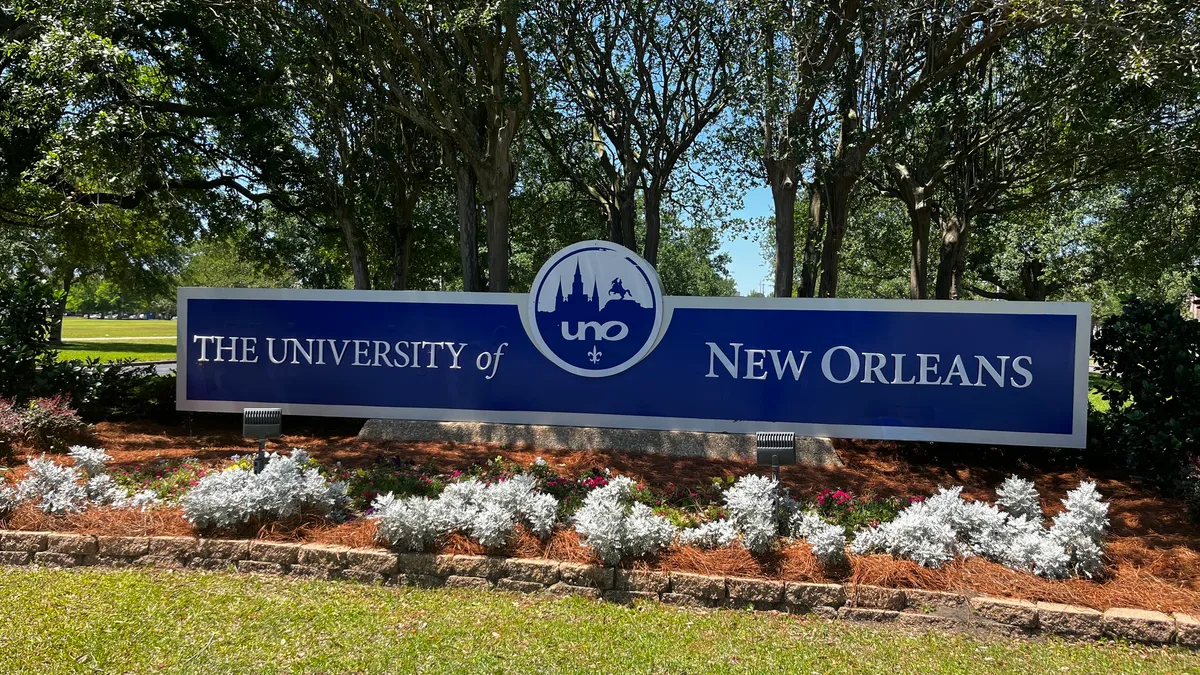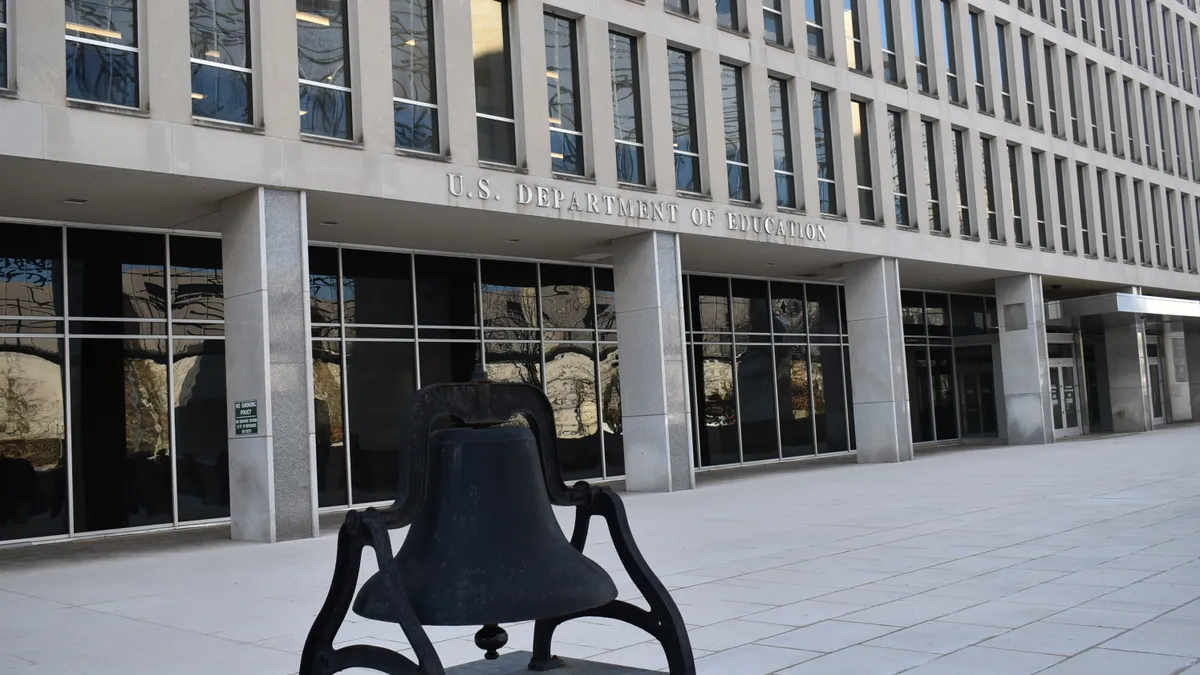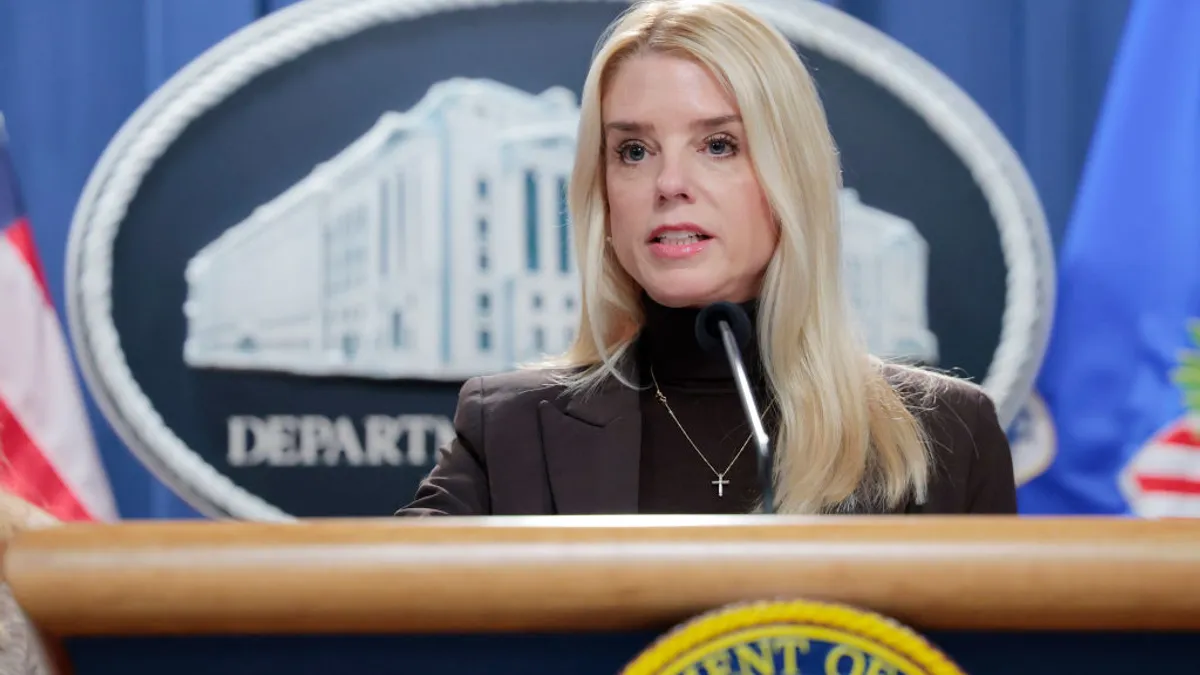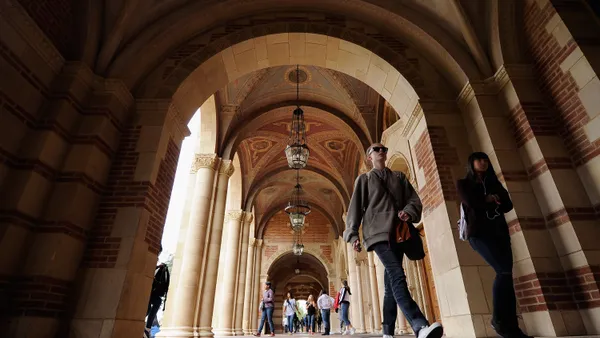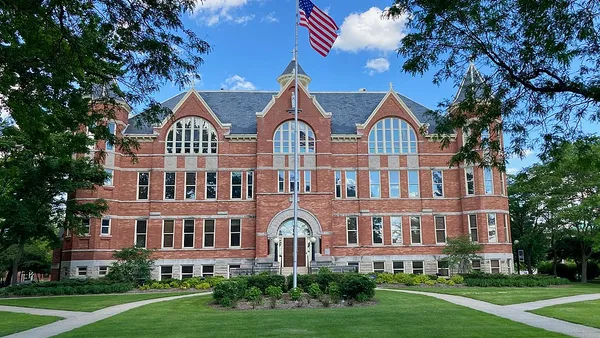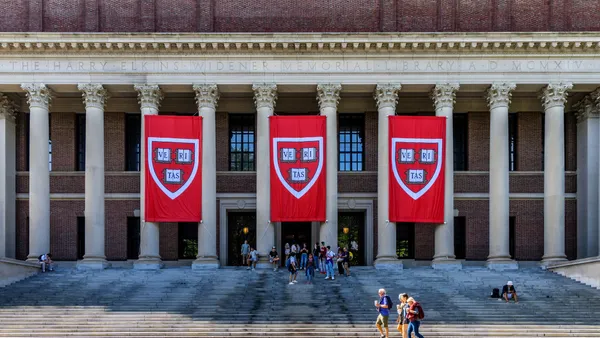Dive Brief:
- University of New Orleans is furloughing roughly 290 of its 575 full-time on-campus employees for differing periods of time during “at least” the rest of the 2024-25 academic year, following approval for the move from its governing board on Thursday.
- As it tries to stem a growing financial crisis, the public institution also signaled that it anticipates layoffs during the spring semester, though it did not specify the number.
- “The financial circumstances we face are a result of factors that have been years in the making,” President Kathy Johnson said in a campus message on Thursday. “Now, we must right-size our budget to match our current revenues.”
Dive Insight:
Speaking to the university’s board of supervisors on Thursday, Johnson and UNO’s head of finance, Edwin Litolff, described an immediate financial crisis at the university.
Long-running trends have led to the current cash crunch, with a short-term need to plug a $10 million budget hole.
One challenge is in enrollment. Litolff noted that enrollment has declined for most of the past two decades. Between fall 2023 and 2018, headcount fell 19% to 6,601 students — and that figure is down about 41.5% from 2010’s 11,276 students, according to federal data. Fall 2024 brought a significant bump in first-year student enrollment but a 1.7% drop overall from the previous year, the university said in September.
Johnson also cited rising institutional costs. The university’s financials show that between 2022 and 2023, operating expenses increased by more than $22 million to $177.7 million. The institution racked up an operating loss of $61.7 million for the year.
“As we have worked diligently to address these challenges, it has become clear that we must continue to take difficult steps to ensure that UNO remains a thriving institution for generations to come,” Johnson said in her message.
Along with the structural financial challenges, Litolff, who serves as UNO’s vice president for finance and administration, described a culture of nonpayment among the university’s students. Unpaid receivables amount to “millions and millions,” Litolff said, and include things like unpaid academic fees and students parking without paying due to delays issuing tags. Often students face few or no consequences as the university whiffed on collecting fees and other due payments.
All of that has weighed on the university’s available cash. In speaking to the university’s board, Litolff at various points referenced concerns around the university’s ability to make payroll, pay on its bonds and deal with some $12 million in current liabilities without increasing cash levels.
The $1.7 million that university leaders expect to save through the furloughs will help with just a small fraction of those liabilities. Officials expect to save another $1 million to $1.5 million through a previously announced hiring freeze.
The university has also announced a spending freeze, layoffs and position cuts amounting to over 70 jobs last summer, and an administrative restructuring in December that brought a handful of high-level cuts.
The furloughs will be on a sliding scale, with unpaid time off increasing with salaries. They exclude full-time teaching faculty, as well as those on H-1B visas, in positions fully funded by grants or with athletic contracts, part-time employees and contract employees.
Total furlough time will also depend on the university’s financial position as the semester goes on, Litolff explained. “We will furlough whatever we need to,” he said.



